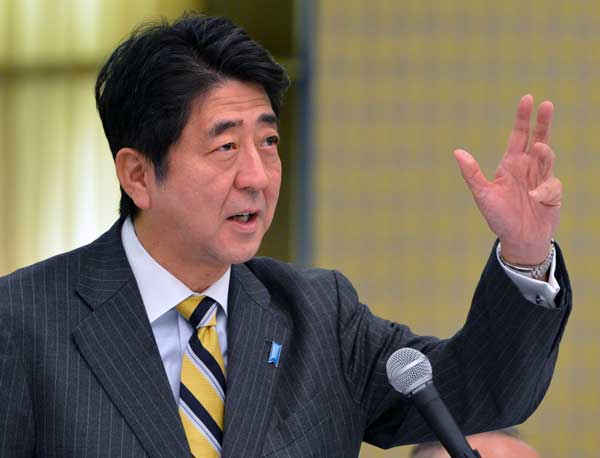
Japan, the world’s third largest economy is yet again in a great dilemma to balance its relations with the US and Iran, owing to the assassination of the Iranian leader Qassem Suleimani on January 3. The killing of the leader infuriated Iranians to the extent of attacking the US power in the Middle East. The killing of Gen. Qassem is likely to trigger an intense repercussions by Tehran against American interests. It will also have further implications for the US ally- Japan as well.
Tokyo and Tehran have maintained their diplomatic relations for decades. Japan imports 90% of its oil from the Middle Eastern countries and 80% of it passes through the Strait of Hormuz, where ships are escorted by a US-led naval coalition. Japan was a major buyer of Iranian crude oil but stopped purchases in order to comply with US Sanctions imposed after Washington quit the Nuclear Deal in May 2018.
Japan had planned the dispatch of Self-Defense Forces (SDFs) to gather information to help protect Japanese-related shipping in the Middle East. PM Shinzo Abe hosted Iranian President Hassan Rouhani in December and was keen to convince Iran to renounce the nuclear weapons. PM Abe, whose country has a strong military alliance with the US and good ties with Iran, is deeply concerned about the rising tensions.
Ever since the enactment of the Japanese Pacifist constitution and its Article 9, Japan has deployed its forces overseas majorly on peacekeeping operations and avoided where its troops are harmed. However, Japan’s plan of sending naval destroyer to the Middle East was an intelligence-gathering mission where the warship shall patrol the Gulf of Oman, following some attacks on oil tankers, including the one operated by Japanese. PM Abe has been having a hard time in trying to balance between the country’s pacifist Constitution and its plan of deploying the SDF. At the same time, he is also quite vigilant of Iran, which is widely blamed by Washington for the attacks on oil tankers.
Unfortunately, after the killing of the Gen. Qassem, the Japanese warship decided not to patrol in the region of Gulf of Oman, but will still be surrounding the area. Japan was already apprehensive of the mission’s risk before the killing. Henceforth, Suleimani’s assassination further added pertinent risk to Japan’s plans for SDF deployment in the region.
Japanese people are concerned about Abe’s efforts to amend the constitution’s Article 9, which calls for renouncing the war and curbs the use of military force. He believes in imposing an assertive security role, therefore, it seems that he has taken a political risk which has increased folllowing the Suleimani’s assassination. Japanese people and the government have criticised the decision of basing the deployment.
Despite Tokyo affirming that there is no imminent danger, it has shown the realist approach by being ready for the military action if the situation escalates further. The conservative Liberal Democratic Party of PM Abe maintained that Japan could use its military to defend itself.
However in 2015, the legislation that passed allowed the country to exercise its right of collective Self-Defence. This implies that Japan can now fight and support the US and its other strategic partners and allies if the Prime Minister finds it essential to deploy troops overseas. Abe also sees Article 9 as a subordination to the US forces and therefore seeks amendment to ensure security and pride.
Tehran staged two Ballistic Missile attacks on two Iraqi bases hosting US troops which further increased tensions in the Middle East and came as a retaliation for the killing of an Iranian General. PM Abe said, “I call on all of those involved to make all possible diplomatic efforts to calm tensions.” He also thought that the dispatch of SDFs could also help to protect Japanese-related shipping in the Middle East. T
he Japanese share market on the first trading day of 2020 also got lower as investors got worried and pulled money out from risky assets towards safer havens due to geopolitical tensions between US and Iran. Moreover, the yen also surged against the Dollar and the Japanese Yen is also considered as a safe haven currency during times of economic uncertainty.
The US assassination of the Iranian general has raised fear of a major conflict. Japanese Chief Cabinet spokesman Yoshihide Suga said that his “government will coordinate with the related governments to collect intelligence while we ensure the safety of Japanese citizens in the region.” Despite the escalating tensions between Iran and the US, Japan does not seem to change its planned deployment of Self-Defense Forces destroyer.
However, the decision shall be analyzed carefully, keeping in mind how the situation turns out to be. PM Abe kicked off a five-day trip to the Middle East on January 11, in lieu of the rising tensions in the region. He has planned to visit Saudi Arabia, the United Arab Emirates and Oman as he wishes to win support from the three countries for the SDF dispatch to the region.
Abe has urged its government to do their best to help normalise the tensions after an Iranian missile strike at bases in Iraq. Japan believes that the increased cooperation with Saudi Arabia, UAE and Oman is seen as vital to secure stable energy supplies.




